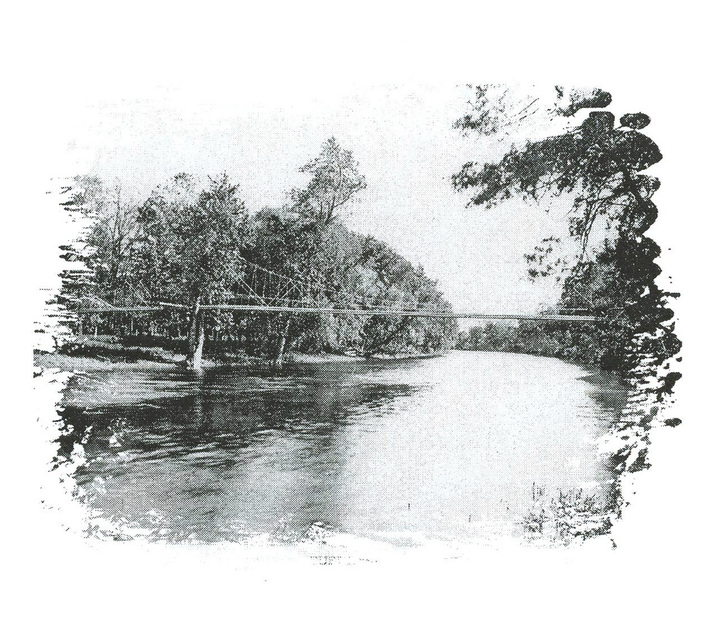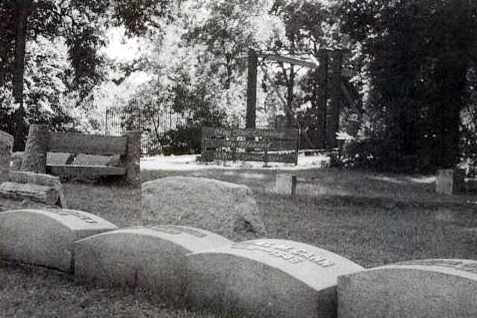Bridge over the river Des Plaines
John Rice May 3rd, 2000 for the Forest Park Review
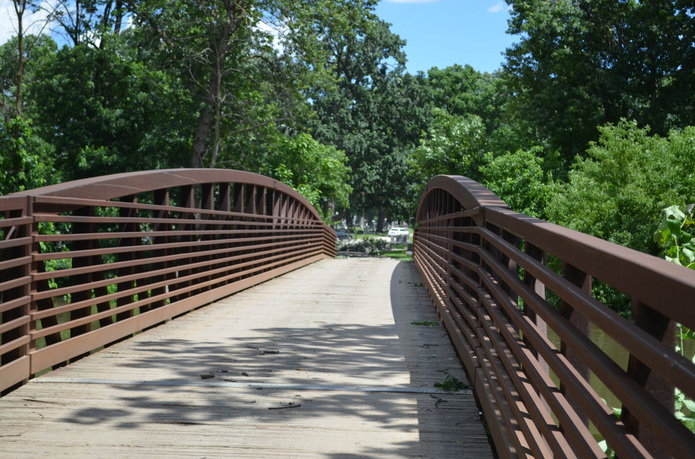
For 10,000 years, people have crossed the Des Plaines River in what is now the heart of Forest Home Cemetery. The cemetery's brand new Steadfast Bridge insures people will be able to cross the river for at at least another 100 years. A dedication of the new bridge was held Sunday, an opportunity for those to see the new span for the first time. 'Assistant Manager of Forest Home Cemetery Lisa Cajigas said, during the dedication, the cemetery has worked very hard to restore the dignity of Forest Home Cemetery. The Steadfast Bridge not only re-stores dignity, it restores the link between the Forest Park and Maywood sides of the historic cemetery Cajigas pointed out the merits of the new bridge (it has a 20 ton capacity), while not forgetting the faithful service of the old bridge. Attached to its granite face is the former bridge's iron name plate, which reads "The Massillon Bridge Co., Ohio,1895."
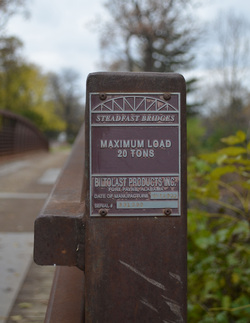
Carved into the granite are the
words,"Original Bridge 1895-2000. New Bridge Dedicated April 30, 2000".
Every 100 years or-so, Forest Home needs to replace its bridge. But,
according to Eugene Propp, Forest Home's attorney, building a bridge to
the new century is not as easy as it sounds."If you're thinking of
building a bridge," he said. "Don't do it. There isn't a governmental
agency that didn't become involved."The bridge had to pass muster with
village,county, state and federal authorities, including the Army Corps
of Engineers, before it could be built. "it was a long road", Propp
said. "But no governmental money was involved. The bridge was entirely
financed by the cemetery." According to Cajigas, building the structure
itself cost $450,000. It took a month for Alabama-based Steadfast
Bridges to complete the job. The company first tested the concrete
supports of the old bridge and found them to be solid. They modified
these supports with some fresh concrete and laid the bridge across the
Des Plaines in four sections. The graceful spans, forged by Blast
Products, Inc., were made of Cor-Tcc steel. The bridge deck was planked
with treated wood. After Propp finished his brief remarks, Dr.Orland,
President of the Forest Park Historical Society, addressed the crowd of
nearly 50 people at the dedication. He pointed out a "trail marker
tree" on the bank of the Des Plaines near the new bridge. He said that American Indians would tie a sapling down into a loop to mark a trail, or river crossing. The tree would grow into an arch to guide travelers. The Indians apparently chose this spot, Orland said, "Because it's the best place to cross the river. "It didn't seem like the "best place" when the rickety-looking Massillon Bridge spanned the water. Orland recalled telling cemetery walkers to "break step" when crossing the old bridge years ago, so as not to jostle the old boards. "We won't have to break step on the new bridge," Orland said Mayor Anthony Calderone then look the podium, welcoming Village Commissioners Mark Hosty and Laureen Thornton, as well as Forest Home's receiver, Judge Saul Epton.The mayor recalled growing up in Forest Park and exploring the "new frontier" of Forest Home Cemetery on his bike.
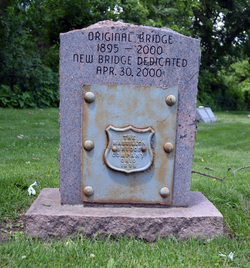
"The old bridge was kind of scary because the sides were open and we were afraid of falling in," he said.The bridge passed the pedestrian test Sunday afternoon, though it had a bit of bounce in the middle. Later, Marvella Butler waited patiently in her 1989 Buick Regal for the foot-traffic to clear, before driving the first car to officially cross the bridge. People have been crossing the Des Plaines River at this point for thousands of years prior to Butler's drive. Native Americans of the Upper Mississippian culture lived on the site, dating back to 8,000 B.C. They not only established a thriving village but, in about 2,500 B.C., began using the site as a burial ground. They constructed elaborate mounds, creating a "mini-Cahokia" in what is now Forest Home. Indians were expelled from this site in 1832 and the land passed to a French half-breed, Leon Bourassa and his Pottawatomi wife, who were deeded the property by President Van Buren, in 1839. Bourassa later sold portions of the grove to Ferdinand Haase, the founder of Forest Park. Haase first used the property as a picnic ground. When that became too rowdy, he turned it into a park-like cemetery. To join the two halves of his property, Haase built wooden truss bridges over the Des Plaines, enabling him to expand his cemetery business across the river. These suspension bridges literally did not withstand the weather. Needing a more permanent structure, Haase hired the Massillon Bridge Company to build an iron bridge across the river. A second steel bridge was built side-by-side the Massillon Bridge, in 1908, allowing-two-way traffic across the Des Plaines.These bridges remained operable until1997, when they were ordered closed by the Village of Forest Park. The old bridges bore a sign that said, "May Your Crossing Be Blessed." The new bridge has no such sign but, on Sunday, one's crossing was truly blessed. As a hawk floated above, four canoeists slid under the bridge, carried by the swift current of the Des Plaines. In our otherwise urban jungle, Steadfast Bridge is a span of tranquil beauty
